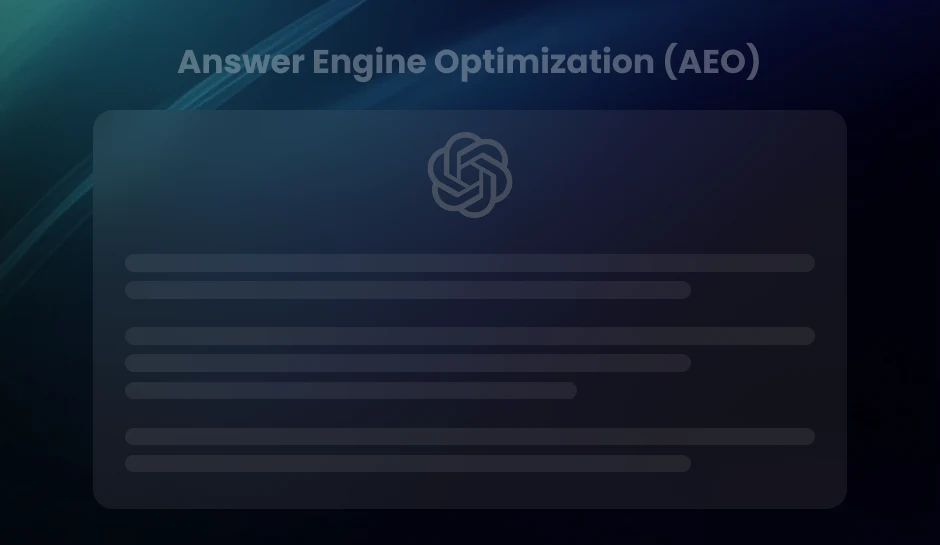
Integrating Predictive Analytics in ABM for Smarter Campaign Decisions
Predictive analytics in ABM reshaping how B2B marketers identify and engage in high-value accounts. This article breaks down the key components of predictive models, practical integration tips, and measurable benefits that elevate your ABM campaigns beyond traditional approaches. If precision and performance are your goals, this guide offers actionable insights to achieve them.
Reaching the right accounts at the right time remains one of the most persistent challenges in account-based marketing. Despite strategic planning, many ABM campaigns fall short because they depend on static account lists and limited insight into buyer readiness. The result is often inefficient outreach, low engagement, and underwhelming returns.
In an increasingly data-driven landscape, relying solely on traditional segmentation methods is no longer sustainable. B2B organizations need a smarter, more adaptive approach to targeting and engagement.
Predictive analytics in ABM offers that solution. By leveraging historical data, real-time behavior, and intent signals, predictive models provide a clear view of which accounts are most likely to convert, and when. This enables marketers to make informed, timely decisions that directly impact campaign performance.
This blog explores how integrating predictive analytics into your ABM strategy can significantly improve precision, accelerate pipeline, and enhance marketing effectiveness.
Why Predictive Analytics Is Critical to Modern ABM
As the B2B buyer journey grows more complex, traditional ABM tactics often struggle to keep pace. While the core principles of ABM, targeting high-value accounts and delivering personalized engagement, remain sound, the execution requires more than manual effort and intuition.
Historically, many ABM programs have relied on broad segmentation and static account lists. These approaches may provide a starting point, but they lack the dynamic insight needed to engage with accounts at the right time and with the right message. Without visibility into real-time buyer behavior or intent, campaigns often fail to resonate or convert.
By analyzing large volumes of historical and behavioral data, predictive models identify patterns that signal readiness to buy. These insights allow marketers to move from generalized outreach to highly focused, data-informed engagement. Instead of working from assumptions, teams can prioritize accounts based on likelihood to convert, tailor messaging based on interest signals, and time their campaigns for maximum impact.
In essence, predictive analytics serves as the bridge between raw data and real-time marketing decisions, empowering ABM programs to become more precise, scalable, and effective.
Key Components of Predictive Analytics in ABM
Data Sources That Power Predictive Models
The accuracy and reliability of predictive analytics depend heavily on the quality of the data being analyzed. In the context of ABM, three primary data sources play a pivotal role:
- First-Party Intent Data: Captured directly from your owned channels, such as website interactions and content downloads. This data provides visibility into how known accounts interact with your brand in real time.
- Third-Party Firmographic and Technographic Data: Includes attributes such as company size, industry, technology stack, and funding stage. These external datasets help contextualize which accounts are a strategic fit for your offering.
- Behavioral Signals from CRM, Marketing Automation Platforms, and Websites: Tracks actions like email opens, webinar attendance, sales touchpoints, and site visits. These signals indicate levels of interest and engagement across the buyer’s journey.
Together, these data sources create a rich, multi-dimensional view of target accounts, which predictive models can then analyze for deeper insights.
Machine Learning and Scoring Models
Once the right data is collected, machine learning algorithms are used to process and interpret it. These models are trained on historical outcomes, such as which accounts converted and which did not, to identify patterns and attributes that correlate with buying intent.
One of the most practical applications of these models in ABM is predictive lead and account scoring. Unlike traditional scoring methods that rely on fixed rules, predictive scoring adjusts dynamically based on real-time behavior and new data inputs.
- Allocate resources more efficiently by focusing on high-impact opportunities.
- Trigger automated campaigns tailored to the predicted stage of the buyer journey.
By combining these components, predictive analytics in ABM enables a shift from reactive outreach to proactive, insight-driven engagement, ensuring that your campaigns reach the right accounts, at the right time, with the right message.
Practical Ways to Integrate Predictive Analytics into ABM Workflows
Integrating predictive analytics into ABM is not just a technological shift, it is a strategic advantage that allows marketing and sales teams to work with greater focus, precision, and agility.
Account Selection and Prioritization
One of the most impactful applications of predictive analytics in ABM is in identifying and ranking accounts based on their likelihood of converting. Traditional methods often rely on static attributes or manual research, which can result in low-value targets being included in the outreach list.
Predictive models, however, analyze a wide array of historical, behavioral, and firmographic data to surface accounts that show strong buying signals. These insights help marketers:
- Focus on accounts that exhibit high intent and fit ideal customer profiles.
- Use AI-generated scoring models to build tiered targeting strategies, ensuring resources are concentrated on the most promising opportunities.
This data-driven approach not only improves targeting accuracy but also reduces waste in marketing spend and sales effort.
Personalizing Campaign Messaging
Once the right accounts have been identified, the next step is crafting messaging that resonates. Predictive analytics provide the context needed to tailor outreach based on specific account behaviors, interests, and buying readiness.
Using predictive insights, marketers can:
- Segment accounts by engagement level, stage in the buyer journey, or thematic interest.
- Deploy dynamic content and personalized messaging across channels to increase relevance and response rates.
- This level of personalization enhances the overall user experience and helps build stronger relationships with key decision makers.
Optimizing Channel and Timing Decisions
Even the best message can fail if it is delivered at the wrong time or through an ineffective channel. Predictive analytics enable marketers to fine-tune campaign timing and delivery strategies by analyzing when accounts are most likely to engage.
This intelligence allows ABM teams to:
- Determine optimal outreach windows based on predicted engagement probability.
- Align messaging across paid media, email, and sales touchpoints with active buying cycles and intent signals.
The result is a more synchronized, data-informed ABM execution that improves both reach and response.
Pro Tip- By integrating predictive analytics into these core areas, organizations can elevate their ABM programs from static and reactive to dynamic and performance driven.
Metrics to Track the Impact of Predictive Analytics in ABM
Implementing predictive analytics in ABM is only valuable if it leads to measurable business outcomes. To evaluate performance and justify continued investment, marketing and sales teams must monitor specific metrics that reflect the efficiency and effectiveness of predictive-driven strategies.
Here are four key performance indicators that reveal the true impact:
- Pipeline Velocity Improvement: Faster identification and prioritization of high-intent accounts leads to quicker movement through the sales funnel. Measuring the reduction in average time from first engagement to opportunity creation can indicate stronger alignment and more informed outreach.
- Lift in Target Account Engagement: Personalized messaging informed by predictive insights tends to result in higher engagement rates. Monitor key indicators such as email open rates, content downloads, event participation, and website activity to assess how well your campaigns resonate with target accounts.
- Deal Size Increase from Predictive-Prioritized Accounts: Accounts selected through predictive scoring models often demonstrate stronger intent and a better fit. Track average deal size across predictive-prioritized accounts versus manually selected ones to determine the value of your scoring model.
- Reduction in Sales Cycle Length: When predictive analytics signals are used to engage accounts at the right time, it shortens the buyer’s journey. Measure the average length of your sales cycle before and after implementation to quantify time-to-close improvements.
By monitoring these metrics consistently, organizations can validate the strategic value of predictive analytics in ABM and refine their approach for even greater impact over time.
Key Takeaways
- Predictive analytics transform ABM from a static strategy into a dynamic, data-driven approach.
- First-party, third-party, and behavioral data are essential to building accurate predictive models.
- Machine learning enables precise account scoring and prioritization based on real-time signals.
- Campaigns become more effective when messaging, timing, and channels align with predictive insights.
- Success should be measured by improvements in pipeline velocity, engagement, deal size, and cycle time.
Conclusion
Integrating predictive analytics into your ABM workflows is no longer optional for competitive B2B teams. It is a strategic capability that empowers marketing and sales to engage in high-value accounts with greater clarity, precision, and timing. When powered by accurate data and machine learning, predictive models remove guesswork and replace it with actionable intelligence, helping you focus efforts where they matter most. The result is not just improved efficiency, but stronger relationships, faster pipelines, and measurable business growth.
Are you ready to take your ABM strategy to the next level with predictive precision? Let’s Talk!
Our experts at DiGGrowth can guide you through implementing predictive analytics that aligns with your ABM goals and deliver real business outcomes. Reach out atinfo@diggrowth.com
Ready to get started?
Increase your marketing ROI by 30% with custom dashboards & reports that present a clear picture of marketing effectiveness
Start Free Trial
Experience Premium Marketing Analytics At Budget-Friendly Pricing.

Learn how you can accurately measure return on marketing investment.
Additional Resources
Don’t Let AI Break Your Brand: What Every CMO Should Know
AI isn’t just another marketing tool. It’s changing...
Read full post postFrom Demos to Deployment: Why MCP Is the Foundation of Agentic AI
A quiet revolution is unfolding in AI. And...
Read full post postAnswer Engine Optimization (AEO): The New Frontier of SEO in 2025
As digital experiences continue to evolve, so does...
Read full post postFAQ's
Predictive analytics optimizes resource allocation by identifying accounts with the highest conversion likelihood, reducing wasted spend. It enhances personalization and timing, resulting in higher engagement and faster deal closures, ultimately increasing return on investment compared to static targeting approaches.
Yes, even small B2B companies can leverage predictive analytics by using scalable tools and third-party data. This helps them prioritize accounts efficiently and compete with larger firms by making data-driven decisions without requiring extensive in-house resources.
Data privacy is critical. Companies must ensure compliance with regulations like GDPR and CCPA by using anonymized, consented data and secure platforms. Respecting privacy builds trust and maintains the integrity of predictive models while delivering targeted marketing.
Predictive models should be updated regularly, ideally in real time or at least monthly, to incorporate fresh intent signals and behavioral data. Frequent updates ensure that scoring reflects current account activity, keeping targeting and messaging relevant and timely.
Common challenges include data silos, insufficient data quality, resistance to change within teams, and difficulty aligning sales and marketing on insights. Overcoming these requires strong data governance, cross-functional collaboration, and clear training on predictive tools and processes.
 Rahul Sachdeva
Rahul Sachdeva  Arpit Srivastava
Arpit Srivastava 

